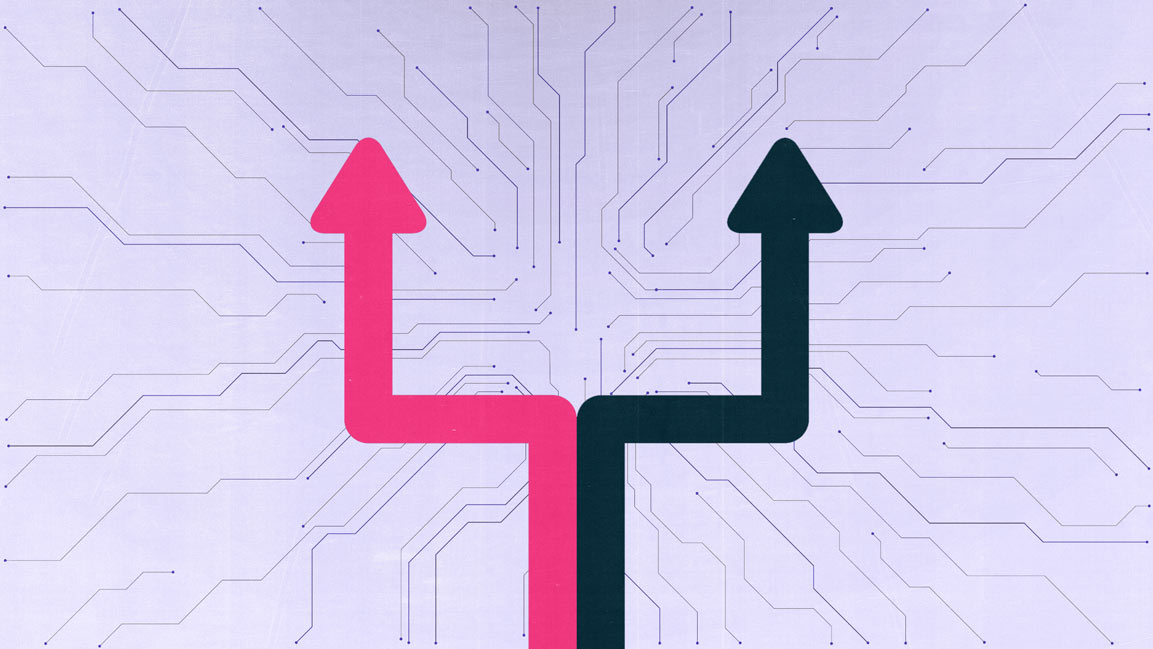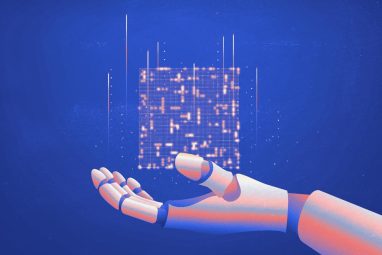How Intelligent Choice Architectures Are Redefining Decision-Making
This shift reflects a deeper realization across industries: the real transformation isn’t about making AI smarter, but about improving the environments in which humans and machines make decisions together.
Topics
News
- Uber and WeRide Launch First Driverless Robotaxi Service Outside the U.S. and China
- UAE Unveils Its First Marketplace for Buying and Trading Trademarks
- ACI Flags Sharp Rise in ‘Friendly Fraud’ as Thanksgiving–Cyber Monday Spike Looms
- WhatsApp’s AI Clampdown to Send Microsoft Copilot Packing by Jan 2026
- Salesforce Adds Arabic to Agentforce to Meet the Demand for AI Systems
- Saudi Arabia’s CEOs Top the Charts on Confidence and AI Readiness, KPMG Reports

In today’s AI-driven enterprises, the next frontier isn’t just smarter algorithms, it’s smarter decision environments. Intelligent Choice Architectures (ICAs) are quietly reshaping how organizations in the Middle East and beyond approach artificial intelligence. These systems don’t just support decision-making; they shape the context in which decisions are framed, evaluated, and acted upon.
Unlike traditional AI tools focused on prediction or automation, ICAs are fundamentally decision-centric. They collaborate with humans to generate alternatives, challenge assumptions, surface trade-offs, and create platforms where better decisions become structurally possible — and often inevitable.
This shift reflects a deeper realization across industries: the real transformation isn’t about making AI smarter, but about improving the environments in which humans and machines make decisions together. Emmanuel Fenehard, Chief Digital Officer at Sanofi, notes: “Organizations don’t scale AI — they scale trust in the systems making decisions.” Trust, then, becomes the true infrastructure of intelligent systems.
MIT Sloan Management Review (MIT SMR) and Tata Consultancy Services (TCS) released the report “Winning With Intelligent Choice Architectures,” which highlights how leading global organizations, including Cummins, Danaher, and Schneider Electric, are deploying ICAs to design better decision-making environments and gain a competitive edge.
What matters next is enabling intelligent agency, both human and machine, within dynamic and complex environments. Decision-centric AI, they argue, is the future.
Rather than treat ICAs as an extension of analytics, leaders increasingly see them as the foundational layer for agentic AI systems — ones capable of autonomous action in evolving contexts. These architectures are quickly becoming prerequisites for meaningful automation and augmentation.
While widespread deployment remains aspirational for many, early ICA applications are already surfacing across industries. Walmart, for instance, has integrated ICA elements into its HR systems to help identify and promote local talent that might otherwise go overlooked. At Liberty Mutual, ICAs are shaping how insurance adjusters approach complex claims, offering scenario-based outcomes rooted in historical and strategic insights. Software companies like Cursor are embedding ICA logic into development tools, enabling context-aware code suggestions and streamlined debugging. Manufacturers like Cummins are using generative AI with ICA capabilities to simulate rare but critical edge-case scenarios, optimizing designs and accelerating time-to-market.
Despite their promise, ICAs also introduce new forms of risk. They can surface biased or ethically misaligned choices, not due to faulty outputs, but because of how the decision space is framed. As the study emphasized, organizations must focus less on the correctness of decisions and more on comfort with how decision environments are constructed.
Trust in ICAs requires more than technical validation — it demands cultural readiness. The study identified five critical questions that act as litmus tests for ICA maturity: Are important decisions visible to your systems? Do incentives promote systemwide outcomes or siloed success? Can teams engage constructively with machine-generated disagreement? Are machine-generated judgments culturally acceptable? And do workflows allow for better choices to actually be adopted?
As Monica Caldas, Global CIO at Liberty Mutual Insurance, put it, “The moment AI enters the workflow, the real question isn’t ‘What does the model say?’ It’s ‘Who gets to disagree with it, and how fast?’” In her view, “We use AI to inform decisions, not to automate them blindly. There’s always a human in the loop, but the loop is getting tighter.”
Ben Peterson, Vice President of People Product & Design at Walmart, echoed the disruption of traditional power structures: “In retail, the systems we build become key partners to senior leaders who are making strategic decisions.”
This reframing of decision rights from final say to architectural influence is playing out across sectors. Philippe Rambach, Chief AI Officer at Schneider Electric, argues that “AI doesn’t replace decision-making — it reframes what decisions are worth making by humans.” Meta’s VP of Product, Ragavan Srinivasan, observed: “AI can now recommend — but who has the right to say yes? We’re redesigning our approval processes around that question.”
These shifts challenge not only who decides, but how decision rights are structured. Governance models like RACI: responsible, accountable, consulted, informed, presume static roles. But in AI-enabled environments, accountability becomes distributed and fluid. Decision rights evolve from command to curation, from ownership to orchestration.
Danaher, a global biotechnology firm, is already seeing this play out. As Martin Stumpe, Chief Data and AI Officer, explained, Danaher is deploying cockpit-style ICAs across M&A and supply chain strategy: “It gives leaders a real-time ability to dive into data that would’ve taken analysts weeks to prepare.” Yet this real-time insight also introduces learning-authority dilemmas. If the system’s logic outpaces human comprehension, managers may retain formal authority while losing operational relevance.
As ICAs reshape how decisions are made, they also redefine how performance is measured.
Rethinking Metrics
Traditional KPIs are no longer sufficient. They focus on outputs but fail to capture the quality, agility, or adaptability of the decision environment itself.
Pierre-Yves Calloc’h, Chief Digital Officer at Pernod Ricard, noted: “We’re trying to make our metrics more intelligent, not just more granular. Intelligence is about usefulness more than precision.” For Schneider Electric’s Rambach, “KPIs are evolving. They’re no longer just retrospective metrics — they’re becoming real-time negotiation tools.”
To support intelligent systems, organizations are adopting KPAIs — Key Performance AI Indicators — which measure how well the decision environment learns, frames, and adapts. These include metrics like framing agility, option innovation rate, and intelligence activation latency.
Meta’s Srinivasan highlighted the architectural implications: “The same data-quality standards don’t apply when you’re optimizing for speed versus learning. They require different architectures.”
In short, performance metrics must evolve alongside decision environments. KPAIs represent the next evolution in strategic alignment, giving leaders real-time insight not just into what happened, but into how decision systems are thinking.
A Strategic Imperative for the Middle East
For organizations across the Middle East, this moment represents more than a technical inflection point — it’s a strategic design challenge. As the region invests heavily in smart cities, AI-enabled healthcare, fintech, and sustainability, the ability to build and govern intelligent decision environments may become a defining advantage.
Success won’t come from deploying more AI tools. It will come from transforming how decisions are structured, surfaced, and stewarded. Those who lead will be the organizations that empower not only better choices — but better choice-makers.





